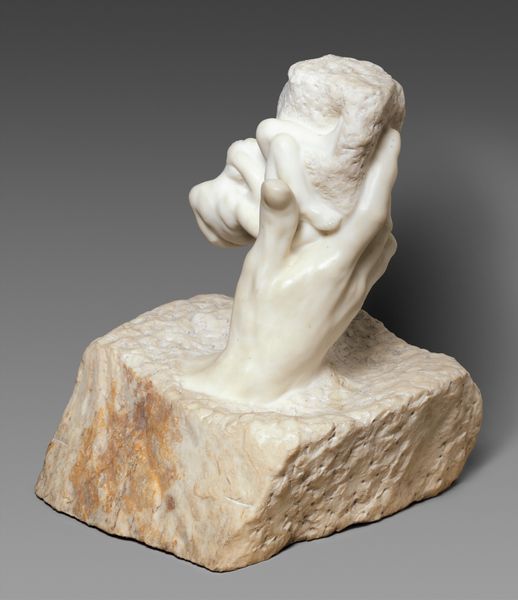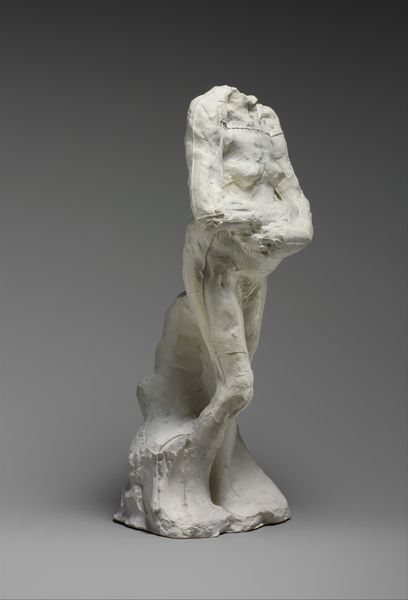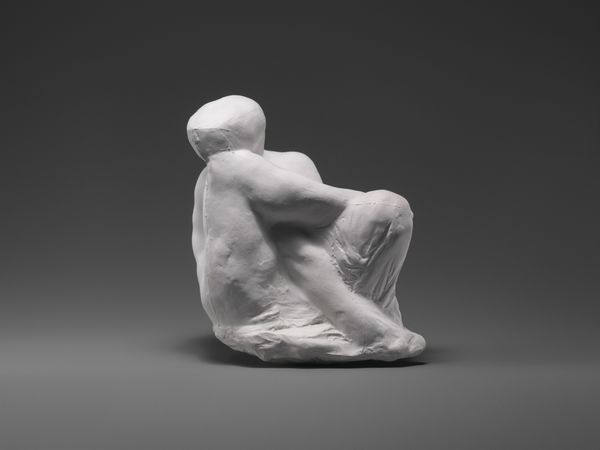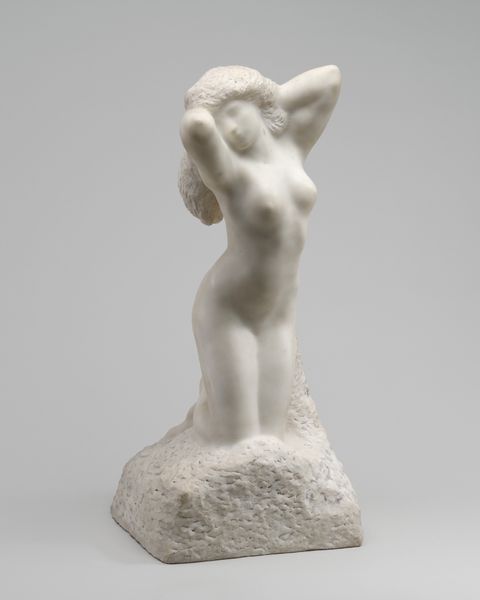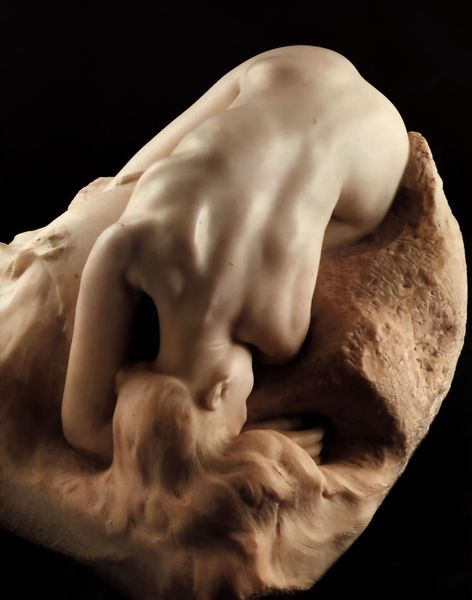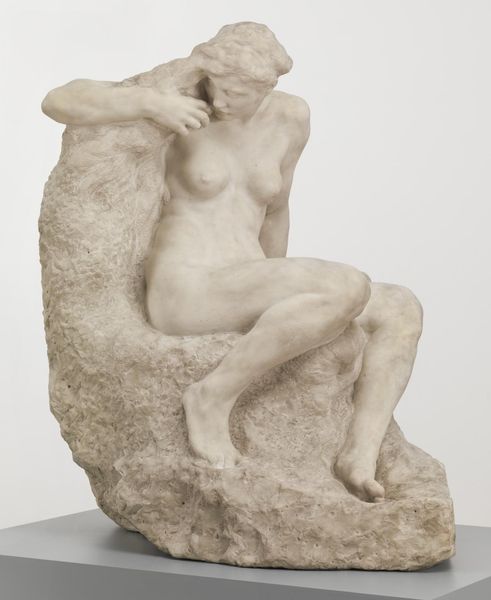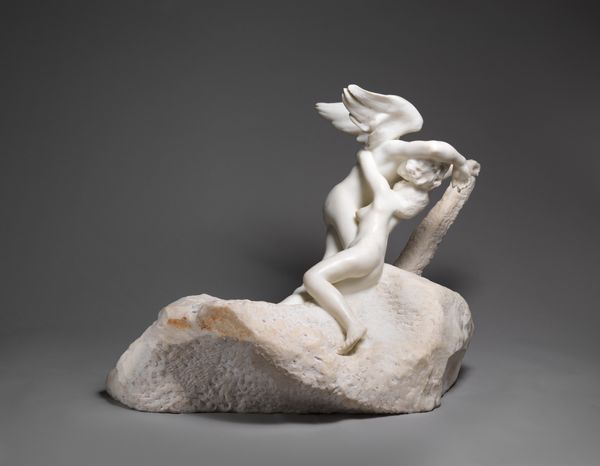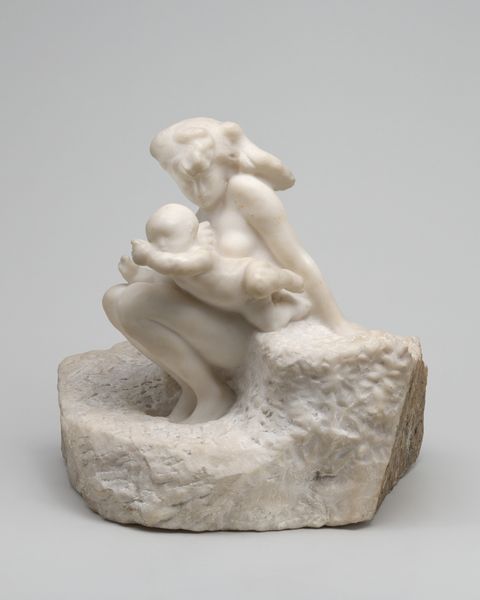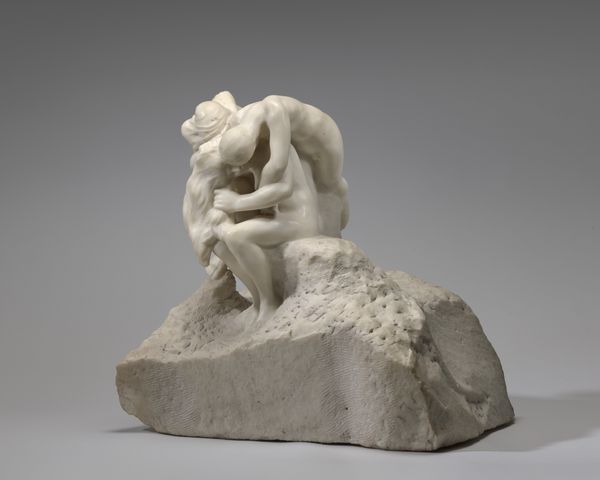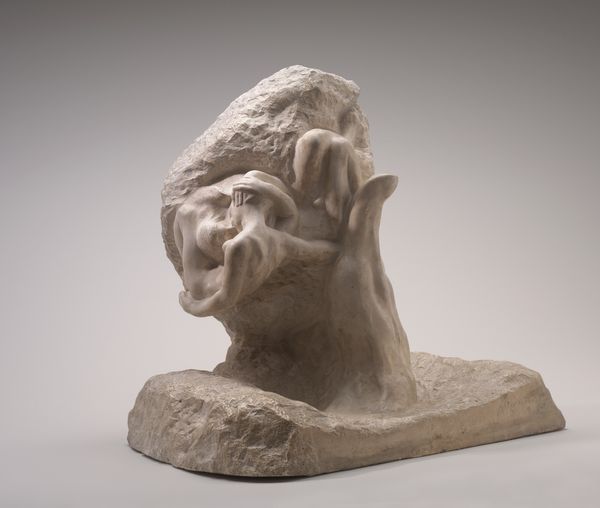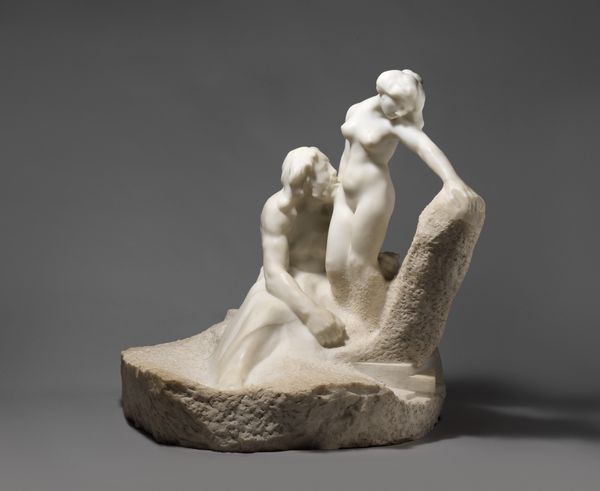
carving, sculpture
#
allegories
#
statue
#
natural shape and form
#
carving
#
symbol
#
structure
#
sculpture
#
sculptural image
#
possibly oil pastel
#
derelict
#
female-nude
#
unrealistic statue
#
sculpting
#
sculpture
#
male-nude
#
ruin
#
statue
Copyright: Public domain
Editor: Okay, next up we have Auguste Rodin’s *Eternal Spring*, carved around 1900. The figures are entwined and appear to almost emerge from the stone itself. It’s sensual, and kind of heart-wrenching. What strikes you about this piece? Curator: What stands out to me is Rodin's use of classical allegories within a modern, and even industrial, social context. Rodin, like many artists of his time, grappled with how classical ideals of beauty and heroism could be relevant in an era of rapid technological and social change. Does this sculpture embrace those traditional values or challenge them, and for what audience? Editor: That's interesting, I hadn't considered the tension between classicism and modernity here. Do you think Rodin was making a statement about the changing role of love, perhaps, in society at the time? Curator: Possibly. Sculptures like *Eternal Spring* were often displayed in public spaces, influencing social values and acting as powerful visual propaganda. How did representations of love, beauty, and the body in art affect ideas about sexuality, morality, and even politics at the turn of the century? Also, it is important to consider the patrons commissioning the works, what class they belonged to and what meaning *they* attributed to it? Editor: So, you're saying the statue isn’t just about eternal spring, but about the eternal values society projects onto it, which would depend on social trends and political power? Curator: Precisely. Editor: It’s wild to think about how sculpture can have so much public significance, far beyond personal interpretation. Thanks, that’s a really fascinating perspective.
Comments
No comments
Be the first to comment and join the conversation on the ultimate creative platform.
